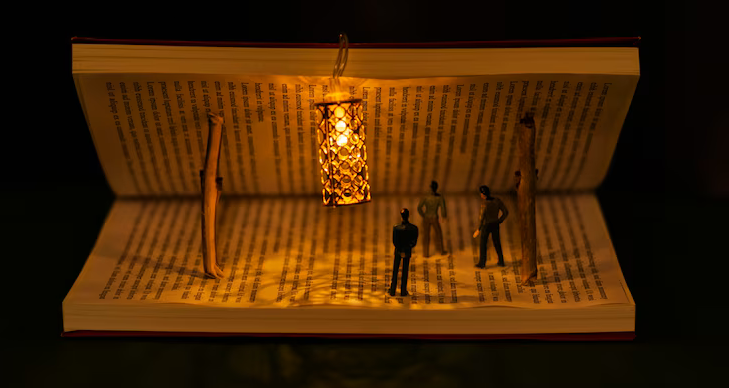In today’s fast-paced world, storytelling remains one of humanity’s most cherished traditions, but how can we keep these stories relevant and engaging for modern audiences? Classic tales, passed down through generations, have stood the test of time, captivating readers and listeners with their profound messages and compelling narratives. However, as society evolves, the way we engage with these stories must also adapt to reflect contemporary sensibilities, values, and interests.
Enter the art of reimagining classic tales for modern audiences. Whether through film, literature, theatre, or even interactive media, reinterpreting these stories allows them to stay vibrant, resonant, and meaningful in today’s ever-changing cultural landscape. Your Stories hub is the perfect place to explore this fascinating journey, where old meets new, and timeless wisdom is presented in fresh, innovative ways.
The Power of Classic Tales
Before diving into the process of reimagining these stories, it’s essential to understand why classic tales are worth revisiting. Classics such as Cinderella, Romeo and Juliet, The Odyssey, and Frankenstein are not just stories but cultural touchstones. These tales are embedded with universal themes such as love, loss, morality, and the human condition. They transcend time and place, speaking to fundamental aspects of being human.
For instance, the themes in The Iliad and The Odyssey—heroism, fate, and the struggle between good and evil—are still relevant today, albeit in different contexts. Similarly, Little Red Riding Hood deals with themes of innocence, danger, and trust, concepts that are still very much applicable in the modern world. Through the lens of reimagining these classics, we can reinterpret them in ways that speak to the issues and values that matter most today.
Why Reimagine?
Reimagining classic tales is not about altering the essence of these stories but rather finding new ways to make them speak to contemporary audiences. The act of reinterpretation can serve several purposes:
- Reflecting Current Social Issues: Classic tales often have themes that resonate with present-day societal concerns. For example, modern adaptations of Frankenstein may delve into ethical questions surrounding scientific advancement and artificial intelligence, a topic that was unimaginable in Mary Shelley’s time but is incredibly relevant today.
- Fostering Inclusivity: Many classic tales were written during times when certain groups, particularly women and people of color, were not well represented. Reimagining these stories allows modern creators to introduce diverse perspectives, giving marginalized voices a chance to be heard. For example, an adaptation of Cinderella might feature a protagonist from a different cultural background or a different gender, challenging traditional notions of beauty, class, and identity.
- Engaging New Audiences: Younger generations are often more attuned to contemporary forms of storytelling, such as graphic novels, streaming media, or interactive video games. By reimagining these classic stories in formats that resonate with young people—whether it’s through a podcast, a TikTok series, or a VR experience—storytellers can reintroduce the classics to a new generation who might not have been drawn to them otherwise.
- Adding Layers to the Narrative: Reimagining a classic tale can allow for deeper exploration of its themes and characters. By updating settings, changing perspectives, or incorporating modern cultural references, creators can add complexity to the narrative, making it more relatable and multi-dimensional. The Great Gatsby has been reinterpreted in various settings, from the roaring twenties to futuristic worlds, each version highlighting different aspects of the original story, such as class struggle, ambition, and the pursuit of the American Dream.
The Process of Reimagining Classic Tales
When it comes to reimagining classic tales, the process can take many forms, each with its own unique approach. Let’s break down some of the key elements involved in reinterpreting a classic for modern audiences.
Setting and Time Period
One of the easiest ways to reimagine a classic tale is by placing it in a different setting or time period. For instance, Shakespeare’s Romeo and Juliet has been adapted into various forms, from the 1996 film Romeo + Juliet starring Leonardo DiCaprio to the 2019 Bollywood adaptation Goliyon Ki Raasleela Ram-Leela. These adaptations take the central themes of forbidden love and family rivalry but update the context to suit modern times, bringing out fresh interpretations.
Similarly, The Legend of King Arthur has been re-imagined in countless ways, ranging from medieval dramas to modern-day action films. By shifting the time period and setting, these stories are made more accessible and relevant to audiences today while preserving the core message of courage, leadership, and honor.
Character Development
Another key element in reimagining classic tales is updating character arcs to reflect modern sensibilities. Traditional characters like The Little Mermaid’s Ariel or Snow White were often passive, relying on external forces (such as love or fate) to change their lives. In modern adaptations, these characters are often given more agency and depth, making them more relatable to contemporary audiences who value self-determination and empowerment.
For example, the 2015 live-action adaptation of Cinderella, directed by Kenneth Branagh, reinterprets the classic character as one who actively chooses kindness and resilience, despite the cruelty of her stepmother. In contrast to the traditional passive heroine, this version of Cinderella takes control of her fate, a theme that resonates strongly with modern audiences who are encouraged to overcome adversity.
Themes and Messages
The themes of classic tales can be reinterpreted to reflect contemporary concerns. For instance, in The Handmaid’s Tale by Margaret Atwood, the reimagining of classic dystopian tropes offers a stark critique of patriarchy and oppression. While the original tale might not have explicitly dealt with issues like gender inequality, modern adaptations can emphasize and explore these themes in new ways.
Similarly, The Wizard of Oz has been reimagined in different mediums to explore themes such as the quest for self-discovery, independence, and the power of friendship. These modern versions tap into the themes of the original while adding layers that speak to today’s societal struggles and triumphs.
Genre Blending and Innovation
Another popular approach to reimagining classic tales is genre blending. Classic stories can be reinterpreted through different genres, such as science fiction, fantasy, or horror. For example, Pride and Prejudice and Zombies is a quirky reimagining of Jane Austen’s beloved novel, blending the elegance of 19th-century England with the horror of a zombie apocalypse. This genre-bending approach not only adds a fresh twist to a familiar story but also attracts a new demographic of readers and viewers.
Likewise, The Jungle Book has been reinterpreted through animation, live-action, and even as a darker, more adult-themed story, all depending on the genre in which it is presented. These adaptations allow the original tales to thrive in a variety of artistic landscapes, giving them new dimensions and experiences for a modern audience.
Examples of Modern Reimaginings
- Disney’s Live-Action Remakes: Disney has been a leader in reimagining classic tales, with films like Beauty and the Beast (2017), Aladdin (2019), and The Lion King (2019). These films combine the magic of the original animated classics with new visuals, updated songs, and a fresh perspective on familiar characters. They introduce the stories to a new generation while retaining their beloved charm.
- Modernized Fairy Tales: Shrek is one of the best-known examples of a modern fairy tale reimagining. Its subversion of fairy tale tropes, sarcastic humor, and witty commentary on traditional stories gave it a unique appeal that resonates with both children and adults. The character of Shrek, for instance, turns the concept of the “ugly” ogre into a sympathetic and relatable figure, challenging societal norms about beauty and worth.
- Graphic Novels and Comic Books: Many classic tales have found new life in the world of graphic novels. Neil Gaiman’s The Sandman series, for instance, incorporates elements of mythology and classical literature, reinterpreting them through a modern lens. In this way, classic stories become part of a new storytelling format that appeals to contemporary readers.
- Contemporary Novels Inspired by Classics: Books like Wide Sargasso Sea by Jean Rhys and The Hours by Michael Cunningham offer modern reimaginings of classic tales. Wide Sargasso Sea reinterprets the story of Jane Eyre by giving voice to the “madwoman in the attic,” while The Hours reimagines the life of Virginia Woolf through a fictional lens. These modern takes not only breathe new life into old stories but also offer a richer, more diverse reading experience.
Conclusion
Reimagining classic tales for modern audiences is more than a creative endeavor; it’s a way of ensuring that these stories remain vital and relevant across generations. By updating settings, characters, and themes to reflect contemporary values, storytellers can breathe new life into these timeless narratives. Whether through books, films, or interactive media, the reinterpretation of classic tales continues to captivate and inspire, offering fresh perspectives on age-old stories. At Your Stories Hub Guest Post, we encourage you to explore these reimaginings and uncover the layers of meaning they bring to the surface, highlighting how the classics can continue to shape and enrich the cultural landscape today.



